Abstract
Cellulase production and growth of a strain of Sporotrichum thermophile were studied by using a mineral salts medium supplemented with yeast extract and insoluble cellulose. The effects of cultural conditions, such as pH, nitrogen source, substrate concentration, and temperature, were examined. Maximum production of C1 and CX cellulases occurred at 45 C in 2 to 4 days, in the presence of 1% Solka/Floc as substrate, when NaNO3 or urea used as sources of nitrogen. Under these conditions, cellulolytic activity of culture filtrates appeared to be similar to that reported for Trichoderma viride grown in a favorable environment. However, comparable yields of cellulase were produced by S. thermophile in less than one-quarter the time required by mesophilic fungi.
Full text
PDF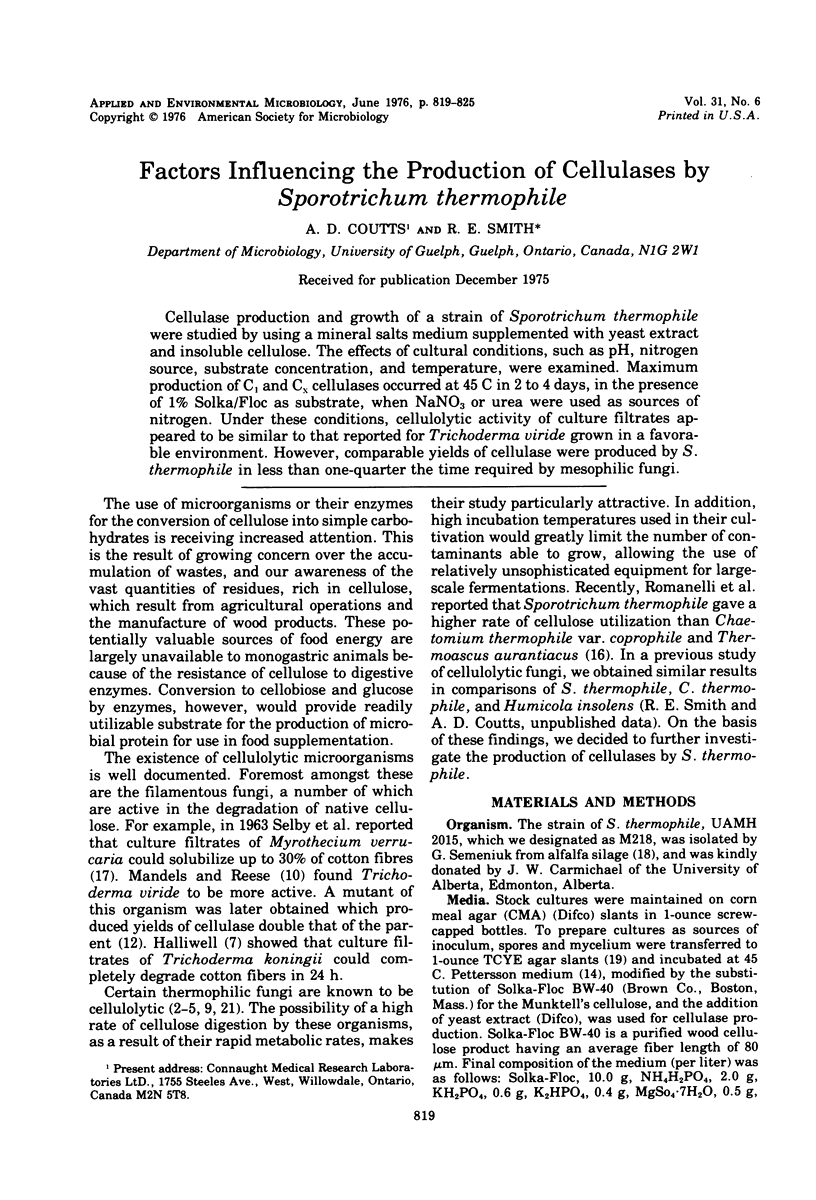
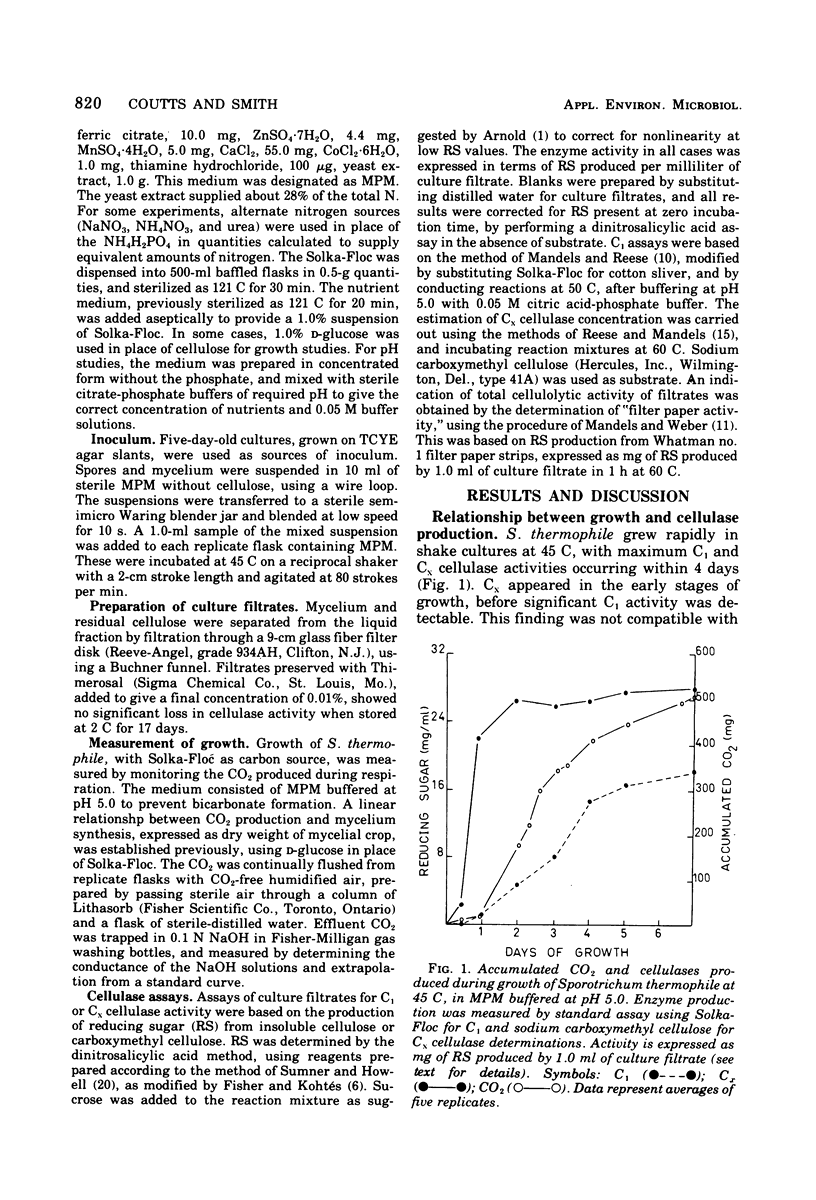
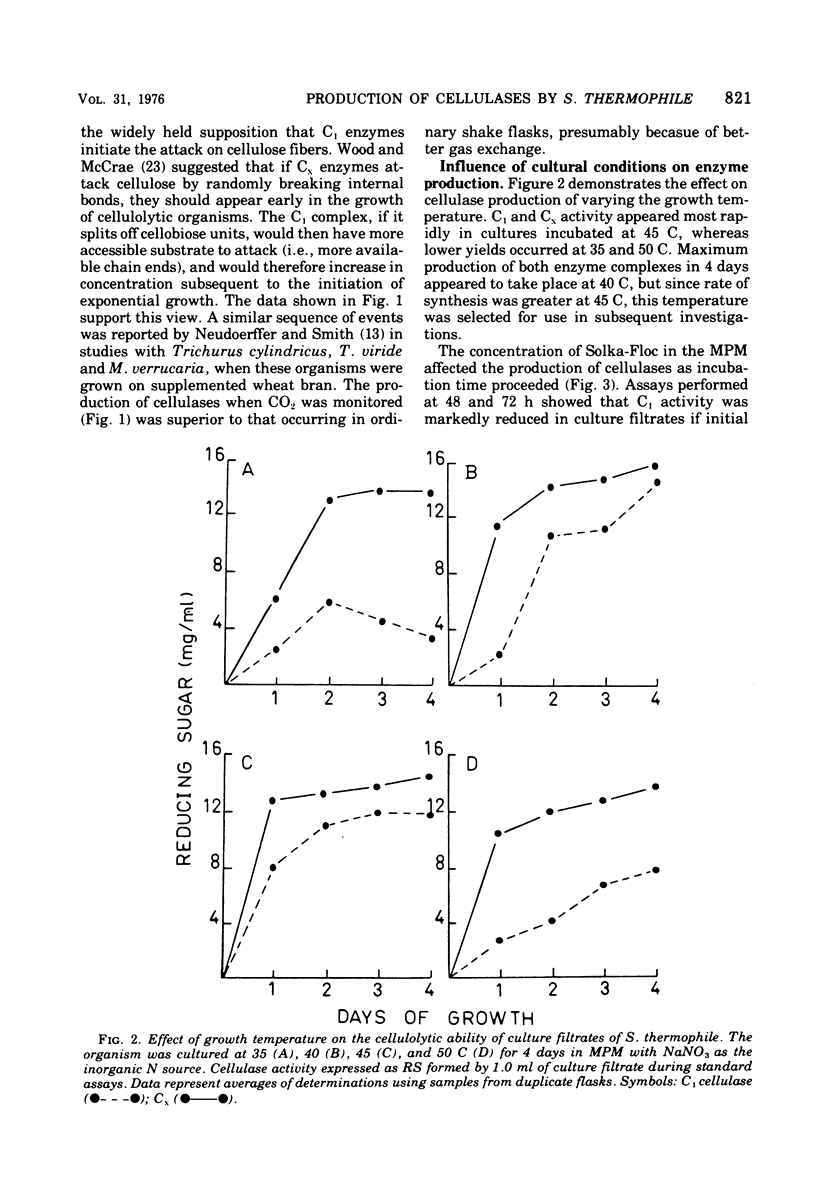
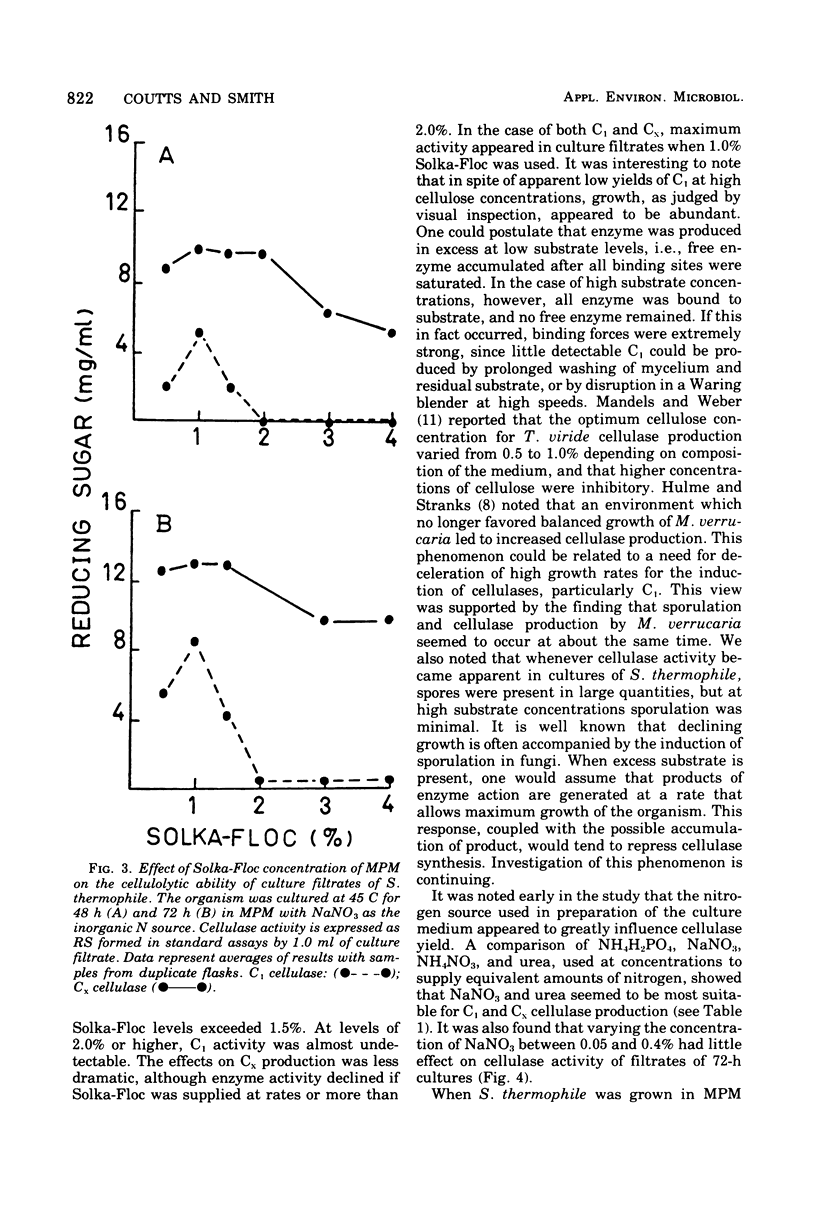
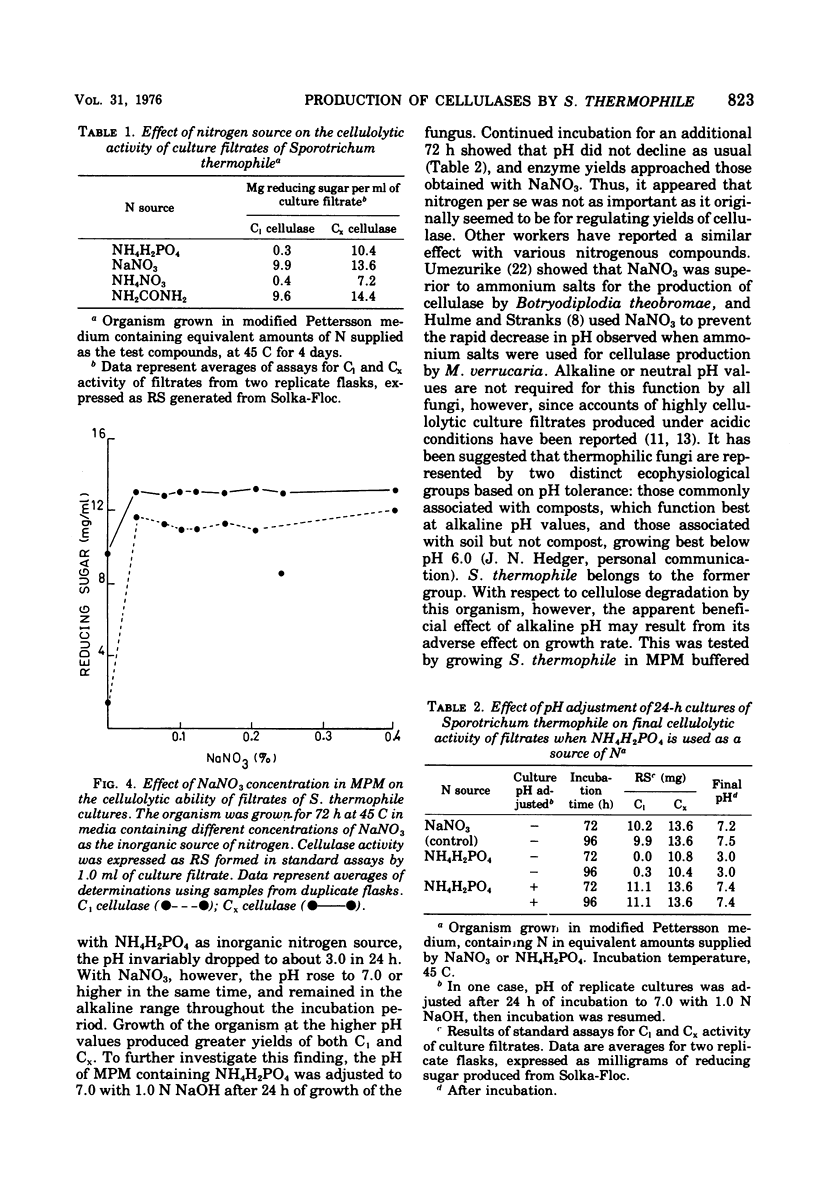
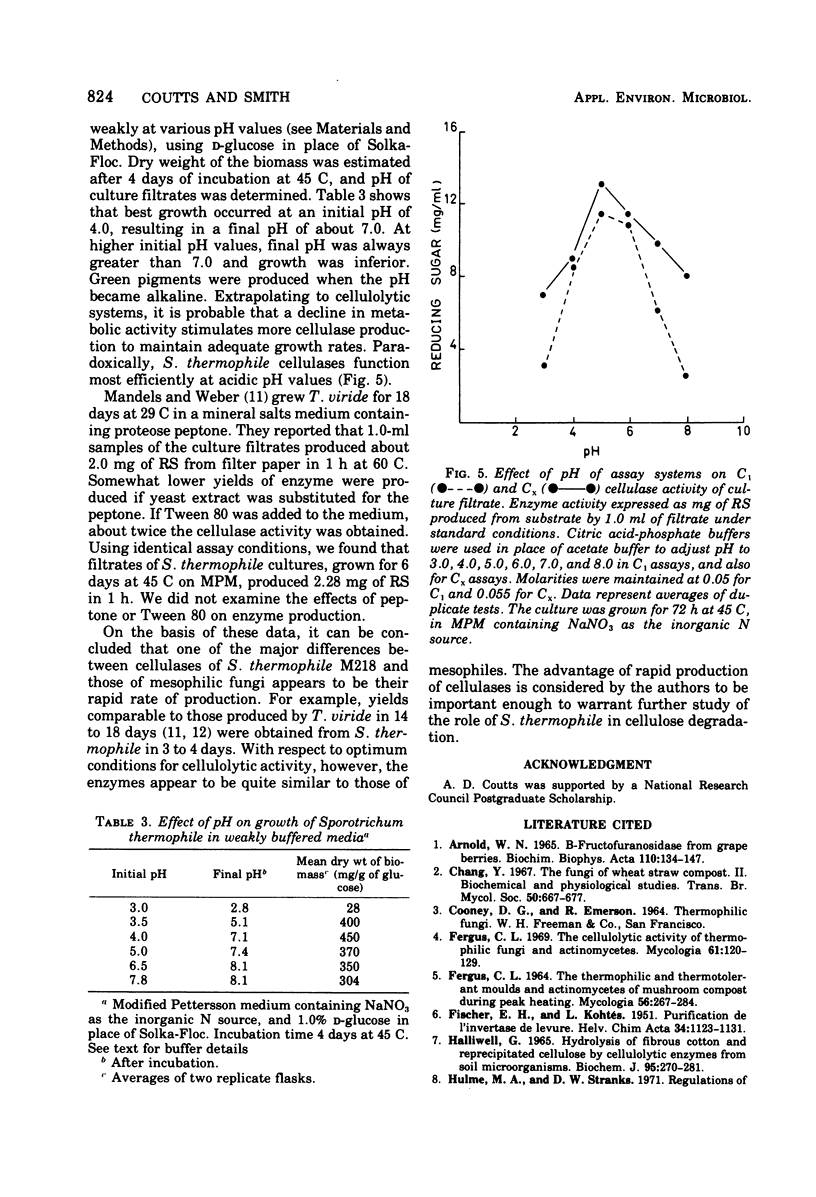
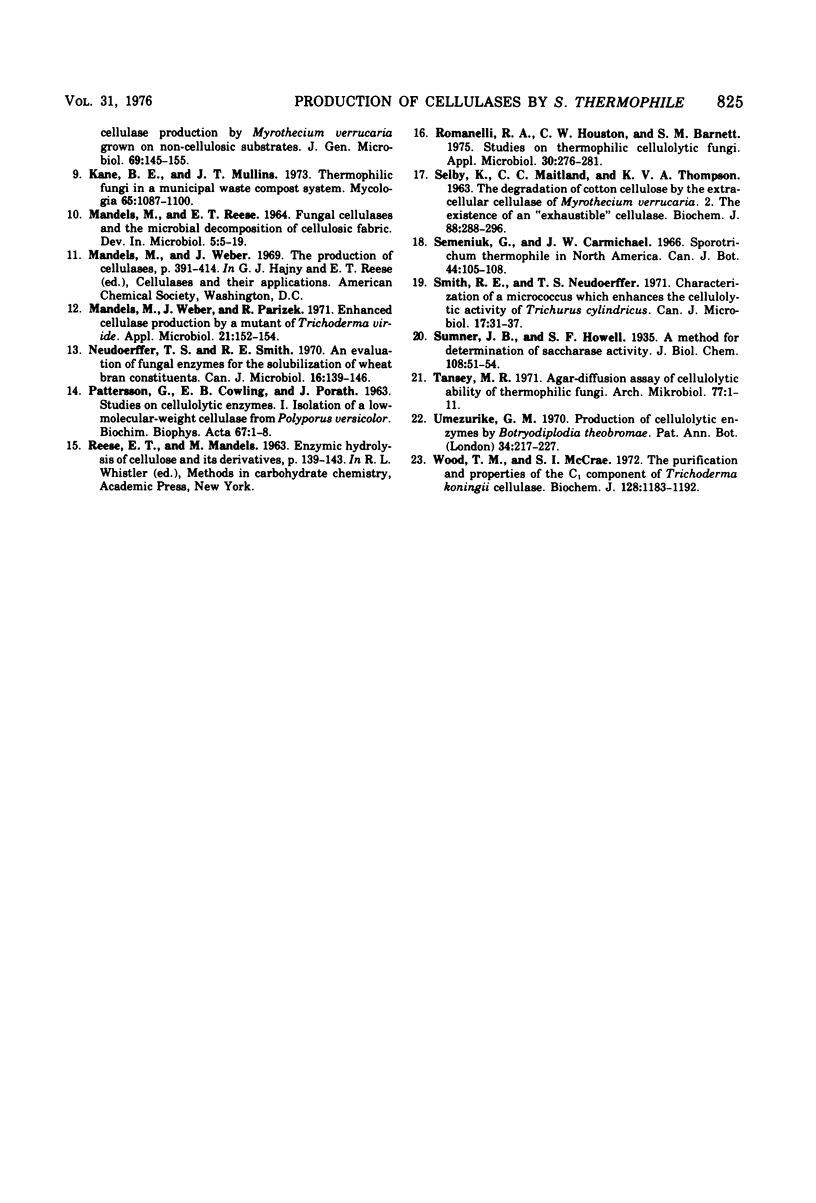
Selected References
These references are in PubMed. This may not be the complete list of references from this article.
- Arnold W. N. Beta-fructofuranosidase from grape berries. Biochim Biophys Acta. 1965 Oct 25;110(1):134–147. doi: 10.1016/s0926-6593(65)80102-3. [DOI] [PubMed] [Google Scholar]
- Fergus C. L. The cellulolytic activity of thermophilic fungi and Actinomycetes. Mycologia. 1969 Jan-Feb;60(1):120–129. [PubMed] [Google Scholar]
- HALLIWELL G. HYDROLYSIS OF FIBROUS COTTON AND REPRECIPITATED CELLULOSE BY CELLULOLYTIC ENZYMES FROM SOIL MICRO-ORGANISMS. Biochem J. 1965 Apr;95:270–281. doi: 10.1042/bj0950270. [DOI] [PMC free article] [PubMed] [Google Scholar]
- Hulme M. A., Stranks D. W. Regulation of cellulase production by Myrothecium verrucaria grown on non-cellulosic substrates. J Gen Microbiol. 1971 Dec;69(2):145–155. doi: 10.1099/00221287-69-2-145. [DOI] [PubMed] [Google Scholar]
- Kane B. E., Mullins J. T. Thermophilic fungi in a municipal waste compost system. Mycologia. 1973 Sep-Oct;65(5):1087–1100. [PubMed] [Google Scholar]
- Mandels M., Weber J., Parizek R. Enhanced cellulase production by a mutant of Trichoderma viride. Appl Microbiol. 1971 Jan;21(1):152–154. doi: 10.1128/am.21.1.152-154.1971. [DOI] [PMC free article] [PubMed] [Google Scholar]
- Neudoerffer T. S., Smith R. R. An evaluation of fungal enzymes for the solubilization of wheat bran constituents. Can J Microbiol. 1970 Mar;16(3):139–146. doi: 10.1139/m70-025. [DOI] [PubMed] [Google Scholar]
- PETTERSSON G., COWLING E. B., PORATH J. Studies on celluloytic enzymes. I. Isolation of a low-molecular-weight cellulase from Polyporus versicolor. Biochim Biophys Acta. 1963 Jan 8;67:1–8. doi: 10.1016/0006-3002(63)91791-8. [DOI] [PubMed] [Google Scholar]
- Romanelli R. A., Houston C. W., Barnett S. M. Studies on thermophilic cellulolytic fungi. Appl Microbiol. 1975 Aug;30(2):276–281. doi: 10.1128/am.30.2.276-281.1975. [DOI] [PMC free article] [PubMed] [Google Scholar]
- Selby K., Maitland C. C., Thompson K. V. The degradation of cotton cellulose by the extracellular cellulase of Myrothecium verrucaria. 2. The existence of an ;exhaustible' cellulase. Biochem J. 1963 Aug;88(2):288–296. doi: 10.1042/bj0880288. [DOI] [PMC free article] [PubMed] [Google Scholar]
- Smith R. E., Neudoerffer T. S. Characterization of a micrococcus which enhances the cellulolytic activity of Trichurus cyclindricus. Can J Microbiol. 1971 Jan;17(1):31–37. doi: 10.1139/m71-006. [DOI] [PubMed] [Google Scholar]
- Wood T. M., McCrae S. I. The purification and properties of the C 1 component of Trichoderma koningii cellulase. Biochem J. 1972 Aug;128(5):1183–1192. doi: 10.1042/bj1281183. [DOI] [PMC free article] [PubMed] [Google Scholar]


